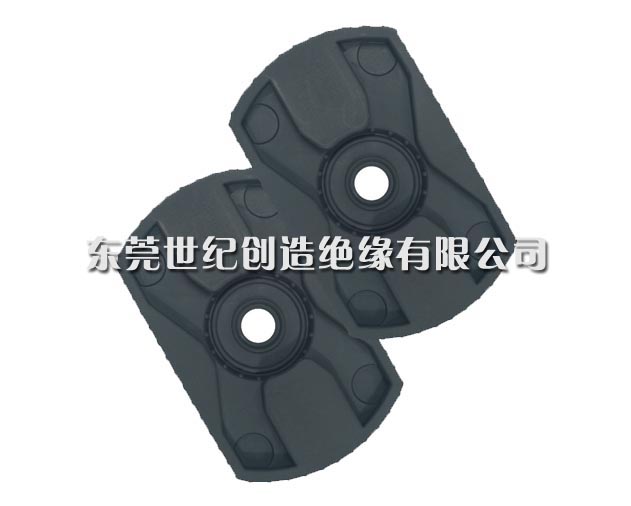Common processing methods for sponge rubber foaming
Release Date:2024-01-20 Click:1505
When producing rubber sponges, the rubber material is usually first molded or extruded into sheet, strip or other shaped sponge materials, and then cut into the required products. There are currently three main processing methods: atmospheric molding, high-pressure molding, and continuous extrusion.
1. Normal pressure molding processing
The normal pressure molding process of sponge rubber involves placing a mixed rubber material containing sufficient foaming agent into the mold cavity, and then vulcanizing and foaming. Be careful not to fill the mold cavity with the rubber material, leaving some space for the rubber material to foam and expand. There should be exhaust holes above the mold cavity to allow the air above the mold cavity to be discharged when the rubber expands. Before adding the adhesive, place a cloth or apply a layer of talcum powder on the inner wall of the mold cavity. When sulfur is added, the gas escaping from the lower adhesive can be discharged. When foaming under normal pressure, it is required that the viscosity of the rubber material be low, so that the rubber material has good fluidity in the mold cavity and is easy to expand. The foam structure of sponge rubber products produced by this method can be either an open cell structure or a closed cell structure, depending on the type and amount of foaming agent and the vulcanization rate of the rubber material.
2. High pressure molding processing
The high-pressure molding method for sponge rubber is generally completed in two stages: pre vulcanization and vulcanization.
(1) In the pre vulcanization stage, like traditional dry rubber molding with sulfur, the rubber material containing foaming agent is filled into the mold cavity. After closing the mold, the pre vulcanization is pressurized at 135-145 ℃ for 25-35 minutes, and then the pressure is relieved. Due to the filling of the mold cavity by the rubber material, the mold cavity is closed after closing. As the vulcanization process progresses, the amount of gas generated by the decomposition of the foaming agent increases, causing the pressure inside the bubbles to gradually increase. During pressure relief, due to the release of the external pressure, the high pressure inside the bubbles rapidly expands in the incompletely crosslinked adhesive material, producing small closed cell sponges. The expansion rate of rubber foam can be controlled through formula design and adjustment of vulcanization time and temperature. The final size and complete vulcanization of the rubber material are completed during the second stage of final vulcanization
It must be noted that during mold opening and pressure relief, it must be done quickly, smoothly, and completely; The mold cavity wall should be designed with a 15 ° inclination angle to facilitate product demolding; During pressure relief, the various components of the flat sulfur machine should move smoothly to allow the rubber material to fully expand freely. If the adhesive material is obstructed during the expansion process, the product may distort or crack.
(2) In the final vulcanization stage, the pre vulcanized sponge semi-finished product is placed in an oven or a larger mold, and then vulcanized for 60-90 minutes at a temperature 15-25 ℃ higher than the pre vulcanization temperature, allowing the sponge product to fully vulcanize and expand, stabilizing to the final size. The specific temperature and interval for final vulcanization are determined by the thickness of the product
It should be noted that the expansion of the sponge sole to the final size is completed in the first stage, while the second stage is to heat treat the molded sponge sole at 100-121 ℃ for 10-24 hours to stabilize the size. If the size is unstable, the product will shrink excessively and deform during use.
3. Continuous extrusion processing
This method is the most effective and economical processing method for preparing sponge products in the rubber industry. It involves extruding rubber materials containing foaming agents through an extruder or rolling them into a certain thickness of film, and then continuously foaming and shaping the extruded semi-finished products or rolling films through continuous vulcanization equipment such as a hot air furnace or liquid sulfur medium, microwave oven, boiling bed, etc. These continuous vulcanization processes are carried out under normal pressure or high temperature, and the decomposition rate of the foaming agent is very fast. To make the rubber material foam, the vulcanization rate of the rubber material is also required to be fast. When designing the formula, attention should be paid to selecting rubber materials and vulcanization systems with fast vulcanization rates.
The extruded closed cell sponge profile can be used for automotive sealing strips, building gaskets, pipeline insulation layers, and other occasions. EPDM, CR, SBR, NBR and their blends can be used to manufacture sponge products using this method. Due to the requirement of flame resistance for pipeline insulation layer, NBR/PVC blend foaming agent is used the most.
Next article:Why does rubber undergo significant changes in its properties after vulcanization
Related news:
- Introduction to Rubber Sponge
- The main factors affecting the vulcanization process of rubber
- The principle of rubber foaming and how it is used for listening to voice during mixing in an internal mixer
- How to distinguish the quality of rubber foam strips?
- How rubber foam strips have a shock-absorbing effect
- Selection of Rubber Raw Materials for Rubber Sponge Products
- Why do we need to undergo secondary rubber vulcanization?
- What are the high-temperature resistance characteristics of rubber sponge materials reflected in?
- Common processing methods for sponge rubber foaming
- Why does rubber undergo significant changes in its properties after vulcanization








